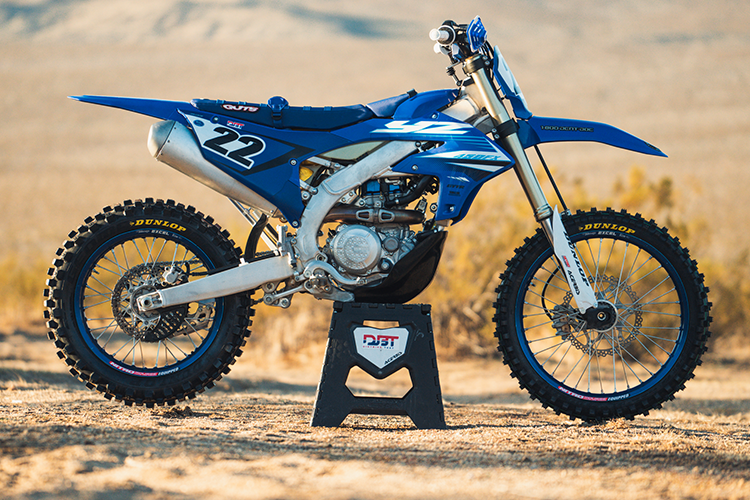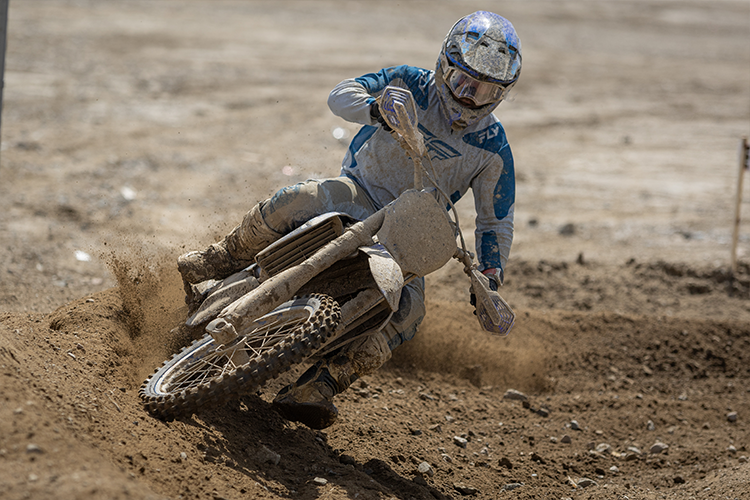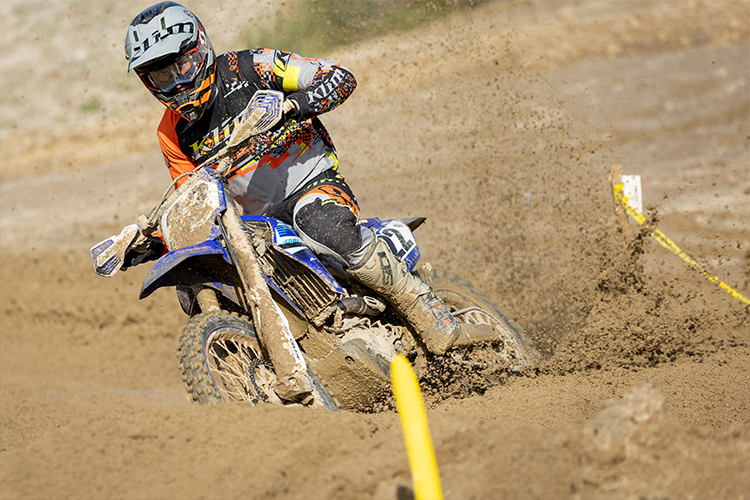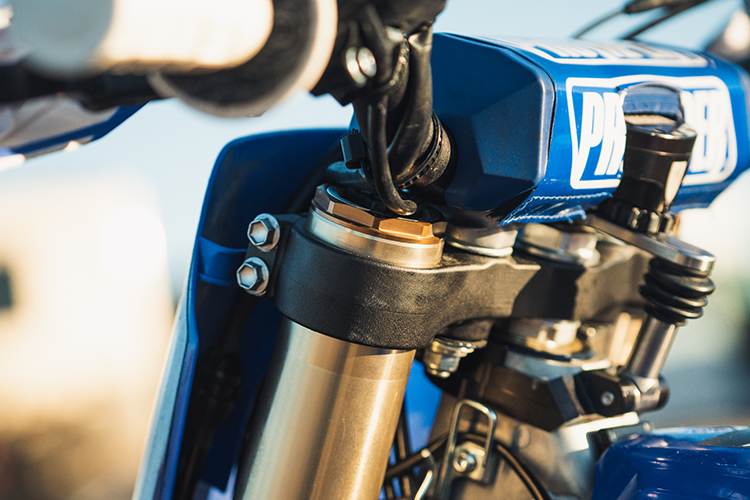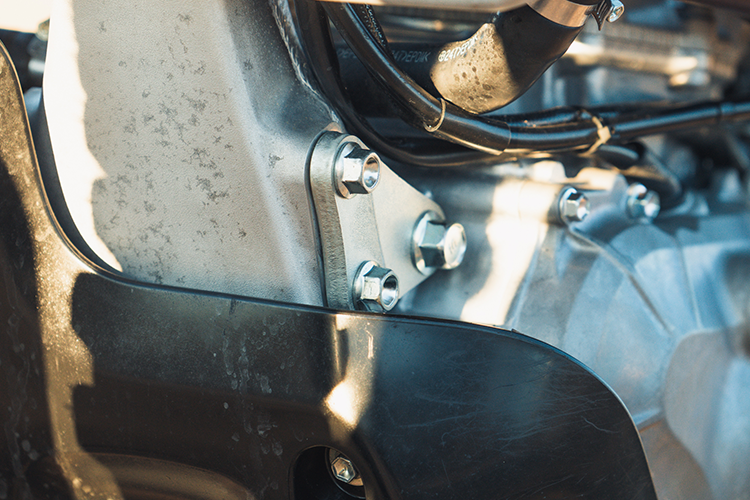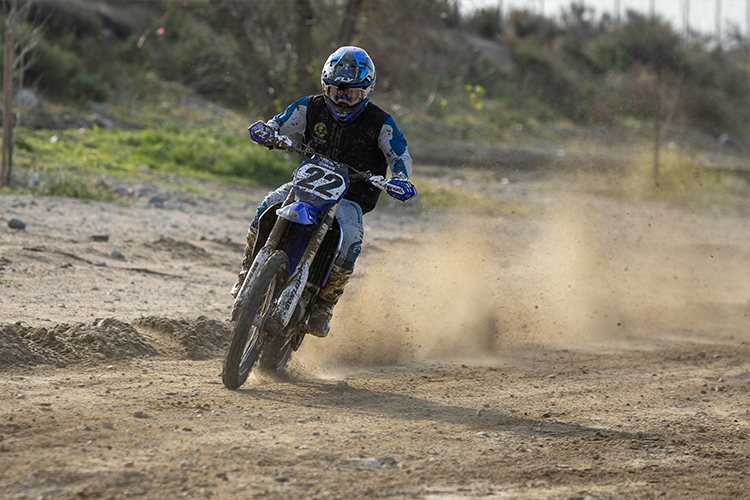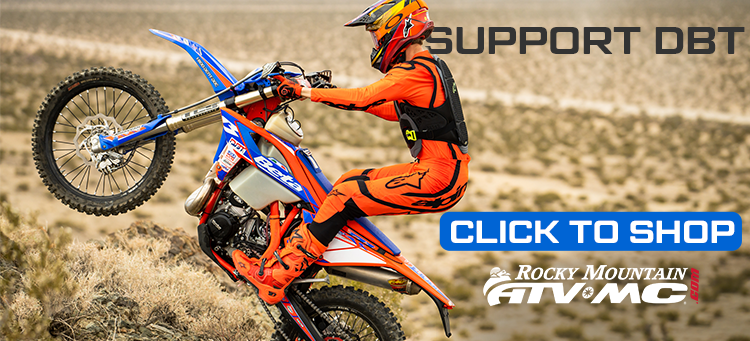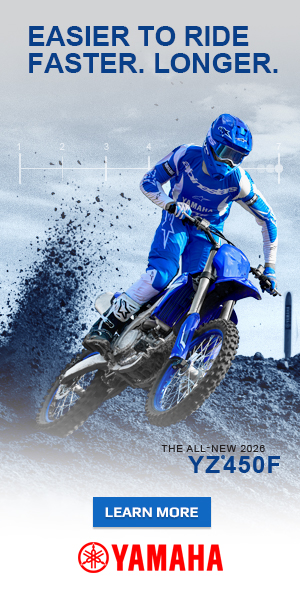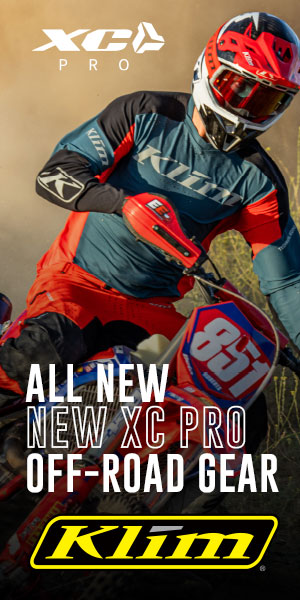2024+ YZ450FX Chassis Tuning Tips
Story by Trevor Hunter, Photos by Trevor Hunter/Jerbal Shots
Yamaha’s YZ450FX has been one of our favorite test units for quite some time now, and even since it underwent a major overhaul in 2024 with an all new chassis, engine, bodywork, and significant suspension changes, the bike remained near the top of the list of our go-to bikes. In a lot of ways, the new platform has been more appealing to a wider range of riders with more neutral feeling ergonomics and an overall more adaptable platform to hop on and go.
The old bike took some time to adjust to and not everyone had enough time or was willing to do so; however, this bike has proven to be much easier for riders to swiftly adapt to it and enjoy it right away. But with that, the quicker turning and lighter feeling chassis has left us searching for some comfort in the new chassis and we’ve found that chassis balance is quite critical – much like all of the bikes in 2025.
We started this race test with a nearly stock bike. Our “mods” are a Precision Racing Steering Damper, an IMS Tank, and Nitromousses. The engine is stock with all zeroes in the mapping and the suspension is completely stock with ~13 hours on it after some riding and the 6 Hours of Glen Helen. The bike is broken in, but still very largely in stock trim. It’s important to note that this testing was done in faster conditions and is most applicable to west coast grand prix and desert style riding and racing. Much of it can also be used for 2024+ WR450F tuning.
Our first order of business was playing with sag. The FX suspension features a 3mm shorter shock shaft (which equates to ~10mm of rear wheel travel) and a 10mm shorter fork to match. The shortened shock is something we did to the previous gen bike so we had experience with that already. We’ve found that 100mm of sag is the sweet spot with this shortened shock length. Running any more sag leads to the rear squatting too much and the front end getting light and busy. In our experience, this bike likes weight on the front end so it’s important to be careful with how much sag you run. 100mm of sag with the shortened shock is a similar ride height to ~106-108mm of sag with a normal length shock which is where that 100mm number derives from.
Our next order of business was playing with fork height. Stock fork height comes at 8mm and is very aggressive for west coast riding and racing. With stock suspension and stock chassis components, we found a 5mm fork height to be the best all around with balanced cornering, stability, and comfort. At this fork height, we ran fork compression at 10 clicks out and were happy with the initial bump compliance and holdup throughout the range. We tried a 3mm fork height, but found that with the stock suspension settings and chassis, it added too much harshness in the front end, losing comfort and front end feel.
Our final test was with the simple motor mount mod we tried (and liked) last year, but we only found it after we had tuned the suspension and were further away from a stock bike. By removing the outer plate on the front engine mount and running the shorter bolts off the YZ450F motocrosser (which now makes it the same setup as the newly updated 2025 YZ450F mount), this adds comfort and compliance to the 450FX chassis. However, it added a little too much and took away from the cornering and made the chassis busy and “loose” feeling”. We found dropping the forks to 3mm added some stiffness and improved chassis balance overall with this motor mount setup and it was our favorite combo with everything we tried. It’s also important to note that we felt the need to stiffen fork compression 2-3 clicks and slow the fork rebound down 1-2 clicks with this setup. The front end had a lot more movement and felt too busy before making the clicker changes, and slowing the rebound down also helped improve cornering slightly as we were struggling with the front end pushing mid corner.
We didn’t have time to properly test this before the 6 Hours of Glen Helen, and one of the things we were struggling with was front end grip and feel. We ran the forks at the stock 8mm height and ran the rebound clickers in stock spec. However, we would’ve benefitted greatly from dropping the forks and tuning the clickers more. However, we did answer the question we had leaving the race and it ended up being a simple solution. We raced it with this spec at the most recent SRA Grand Prix at Glen Helen Raceway and were quite pleased with the performance of the bike.
Very simple changes have proven to be very effective, or defective, on this generation YZ450FX. Smaller changes like 2-3mm in sag, 2mm in fork height, and small modifications to the engine mounts drastically change the feeling of this bike and are worth testing on your own to see what combination you like best. Last year, we felt the suspension settings were on the stiff side and the bike would be difficult to ride at times, but more of that was in the chassis than in the suspension and with these small chassis changes, we found ourselves stiffening up the suspension, not softening it. Chassis rigidity balance is a real thing and has quite the effect on your bike!
